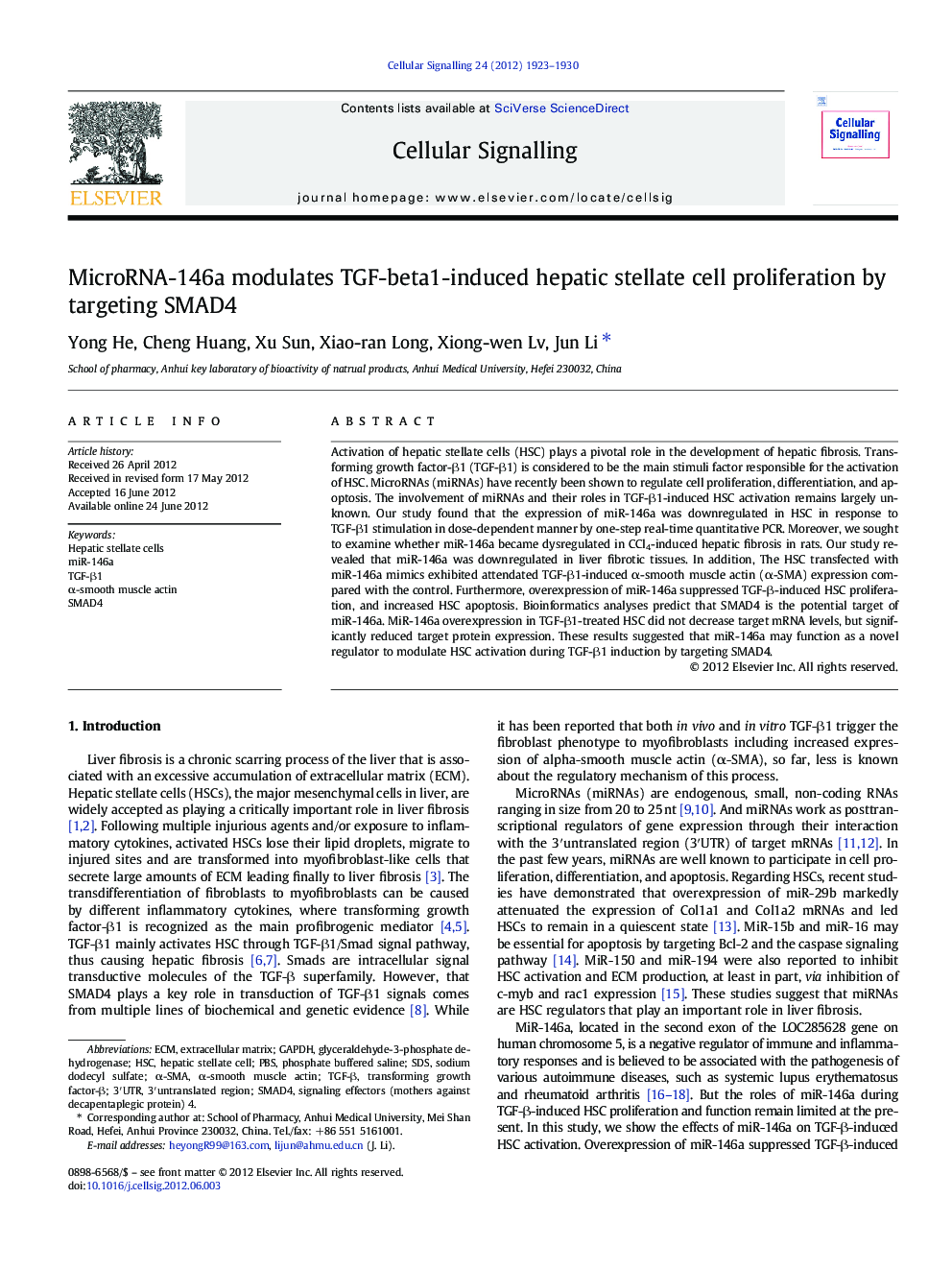| Article ID | Journal | Published Year | Pages | File Type |
|---|---|---|---|---|
| 1963577 | Cellular Signalling | 2012 | 8 Pages |
Activation of hepatic stellate cells (HSC) plays a pivotal role in the development of hepatic fibrosis. Transforming growth factor-β1 (TGF-β1) is considered to be the main stimuli factor responsible for the activation of HSC. MicroRNAs (miRNAs) have recently been shown to regulate cell proliferation, differentiation, and apoptosis. The involvement of miRNAs and their roles in TGF-β1-induced HSC activation remains largely unknown. Our study found that the expression of miR-146a was downregulated in HSC in response to TGF-β1 stimulation in dose-dependent manner by one-step real-time quantitative PCR. Moreover, we sought to examine whether miR-146a became dysregulated in CCl4-induced hepatic fibrosis in rats. Our study revealed that miR-146a was downregulated in liver fibrotic tissues. In addition, The HSC transfected with miR-146a mimics exhibited attendated TGF-β1-induced α-smooth muscle actin (α-SMA) expression compared with the control. Furthermore, overexpression of miR-146a suppressed TGF-β-induced HSC proliferation, and increased HSC apoptosis. Bioinformatics analyses predict that SMAD4 is the potential target of miR-146a. MiR-146a overexpression in TGF-β1-treated HSC did not decrease target mRNA levels, but significantly reduced target protein expression. These results suggested that miR-146a may function as a novel regulator to modulate HSC activation during TGF-β1 induction by targeting SMAD4.
► The expression of miR-146a in HSC ► miR-146a modulates SMAD4 in HSC. ► miR-146a modulates HSC proliferation by targeting SMAD4.
